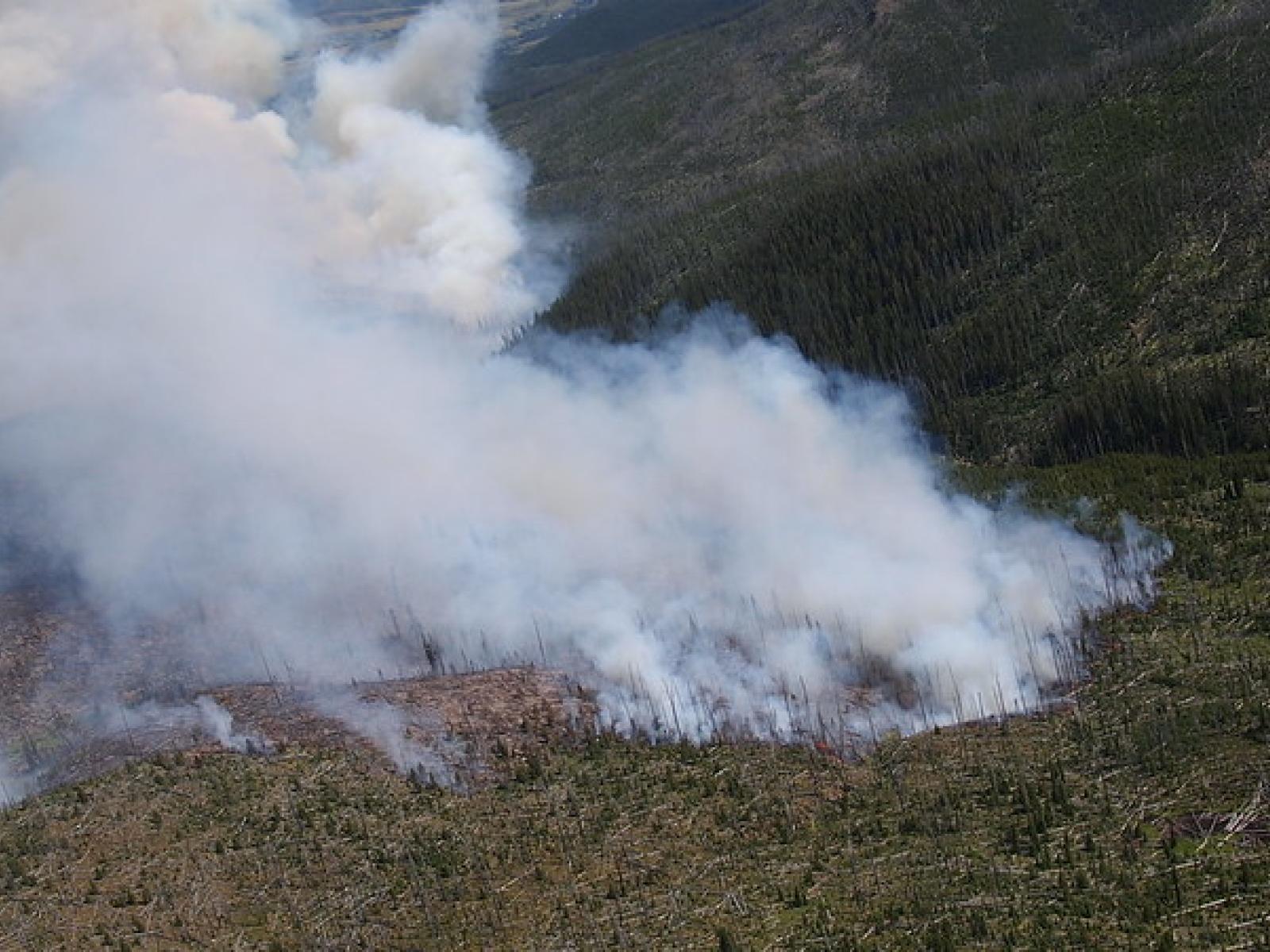Water Quality Impacts from the Largest Wildfire in New Mexico’s History
Wildfire impacts on downstream aquatic ecosystems were tracked using water quality sensors to measure changes in water chemistry and energy flows

Water quality parameters and ecosystem processes were impacted for multiple months after the wildfire, with impacts observed over 160 kilometers (~100 miles) downstream of the burn scar.
(Image by LaWen Hollingsworth | USDA Forest Service)
The Science
Water quality changes in the immediate area of wildfires are commonly measured in streams and rivers. The spatial extent of these impacts downstream of burn areas, however, are more difficult to measure. This study used historical data, remote sensing, and aquatic sensors to measure how far wildfire impacts propagated through the watershed after the 2022 Hermit’s Peak/Calf Canyon fire, which burned 341,471 acres, making it New Mexico’s largest wildfire in history. Analyses showed that the wildfire generated increased streamflow during post-fire rainstorms and altered water quality (including pH, sediments, and metabolism) as far as 160 km downstream of the burn scar.
The Impact
Most wildfire studies to date have not measured how far downstream impacts can be observed. It is difficult to predict when and where wildfires will occur, and mobilizing people and equipment takes time. Through rapid deployment of sensors in streams below the 2022 wildfire in New Mexico, this research found that higher streamflow and changes to water quality propagated far from the burned area via fluvial (river and stream) networks. These findings have important implications for human and ecological communities located downstream of wildfires in terms of increased flood risk, drinking water impairment, and aquatic ecosystem degradation. The results of this study are a call to action for future research on better understanding how wildfires influence watersheds to safeguard freshwater resources in fire-impacted regions.
Summary
Wildfire frequency and extent have been increasing in recent decades, driving corresponding increases in their impacts to aquatic ecosystems. However, it remains difficult to measure exactly how far downstream these impacts can be found. This study used a combination of data sources to identify and track wildfire impacts on aquatic ecosystems downstream of the largest wildfire in New Mexico’s history. Results from multivariate analyses and metabolism modeling showed that the wildfire drove changes in water quality up to 160 km downstream of the burn scar. These analyses provide new methods for tracking downstream wildfire impacts, and the findings add to quantitative evidence that wildfires can dramatically influence downstream aquatic ecosystems.
Contacts
Peter Regier, peter.regier@pnnl.gov
James Stegen, james.stegen@pnnl.gov
Funding
The National Science Foundation funded a large portion of this work, as well as the United States Army Corps of Engineers. Support for manuscript development was provided by the Department of Energy (DOE), Office of Science, Biological and Environmental Research program, as part of the Environmental System Science program. PNNL’s contribution originates from the River Corridors Science Focus Area at the Pacific Northwest National Laboratory. PNNL is operated for DOE by Battelle Memorial Institute. The New Mexico Water Resources Research Institute also funded part of this research through faculty and student grants.
Related Links
Published: July 9, 2025
Nichols, J., Joseph, E., Kaphle, A. et al. 2024. “Longitudinal propagation of aquatic disturbances following the largest wildfire recorded in New Mexico, USA.” Nat Commun, 15, 7143 (2024). https://doi.org/10.1038/s41467-024-51306-9